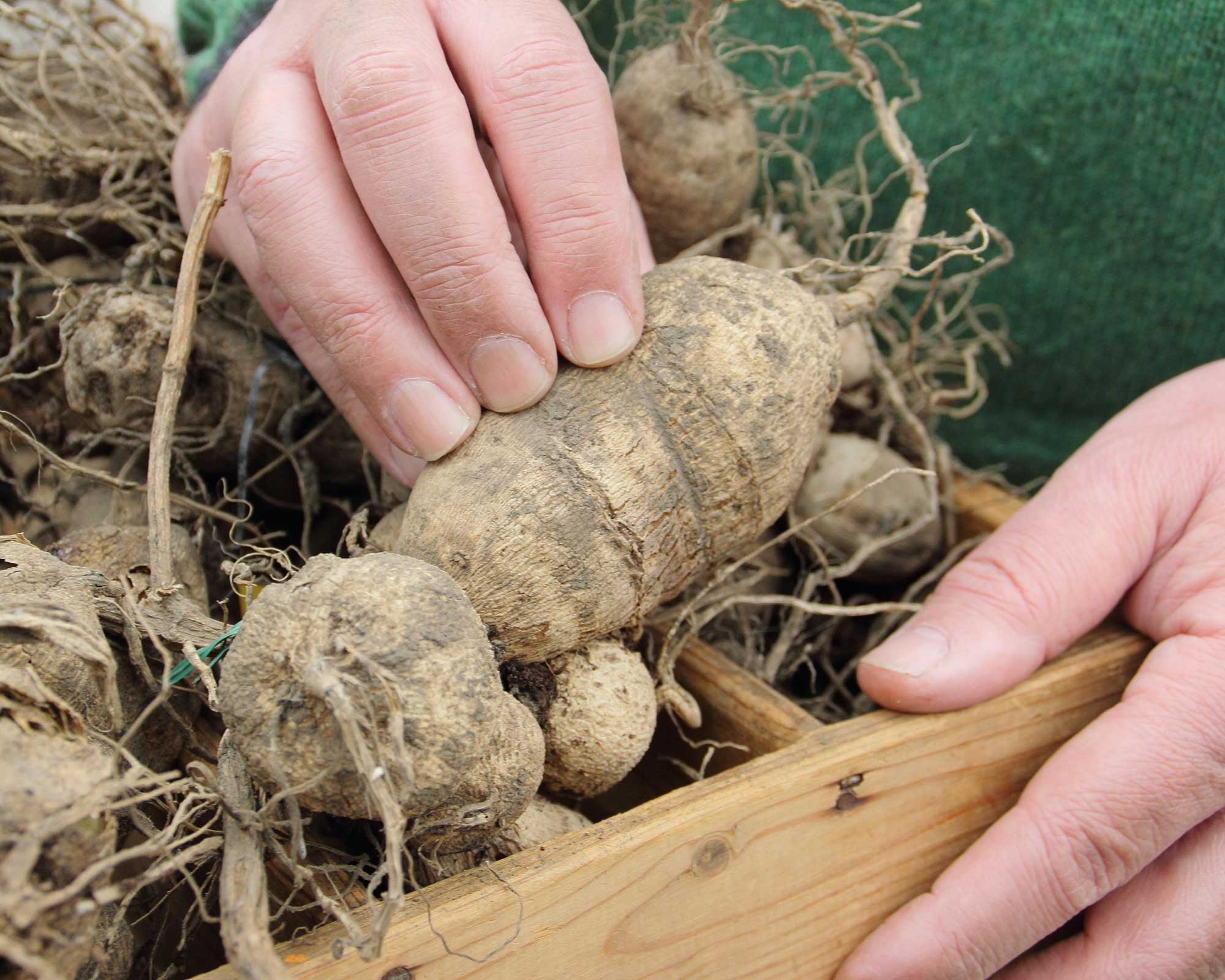How to store dahlia tubers: a simple step-by-step guide
By learning how to store dahlia tubers, you can keep them protected from winter weather and then re-plant them next year for more fabulous flowers


Learning how to store dahlia tubers for winter is simple and a great task to add to your list of autumn gardening jobs.
Growing dahlias rewards gardeners with an array of fabulous colors and forms in flower beds and pots. They're one of the very best blooms to brighten up the late-summer garden and are wonderful for cutting and bringing indoors, too. As perennials, you can enjoy their flamboyant display year after year – but only if you overwinter them correctly.
Dahlias are tender plants, so they won't survive cold temperatures. This means that it's safest to store the tubers indoors over winter, says the RHS – especially if you have grown them on heavy soil, such as clay. This guide on how to store dahlia tubers explains everything you need to know, so you can get the most out of these plants.

Follow these straightforward steps on how to store dahlia tubers
John Negus, an expert from Amateur Gardening, shares his step-by-step advice for storing dahlia tubers below.

John has been a garden journalist for over 50 years, has written four books, and has also delivered many talks on horticulture. As well as this, he regularly answers readers' questions in Amateur Gardening magazine, many of which have been around growing dahlias.
- When chilly nights blacken the leaves, shorten stems to within 8in (20cm) of the base.
- On a dry day when the soil is crumbly, carefully dig around the root system and lift the plant out of the soil with a garden spade. Don’t use a garden fork which may pierce the tubers. When you’ve removed the plant, use a stick or a wooden label to tease soil from the tubers.
- Next, use a long-handled screwdriver to make a hole vertically through the middle of the stem and out through the top of the tuber cluster. Then position the plant upside down in a frost-free shed or garage to ‘drain’. This will help to prevent the tubers from rotting in storage.
- When the tubers are dry, pack them carefully into wooden or cardboard boxes and pack screwed-up paper or straw around them to protect them from low temperatures. Alternatively, store them in trays of sand. Add fleece or sacking during very cold spells for extra protection. They should be kept somewhere frost-free, dark, and dry: the ideal spot is under greenhouse staging or in a shed or garage.
- In early to mid-spring, remove the plant and set it in a box of gritty soil in a warm, light place to grow fresh roots and shoots. When shoots are 2-3in (5-7cm) long, use some of them as cuttings. The plant can be put outdoors in early to mid-summer, when any risks of frosts have passed.

If your dahlias are planted in containers (and you don't want to reuse them to fill with winter plants for pots), you can simply move the pots into a shed or other dry, frost-free place. This is as long as they're not planted in a loam-based compost, John adds. As above, wait for the leaves to die and cut them back before doing so.
Do you always have to lift and store dahlia tubers?
It's not always necessary to lift dahlia tubers. If you live somewhere that has reliably mild winters, it should be possible to leave them in the ground and still enjoy their fabulous flowers next year.
Cut back the plants before covering them in a thick mulch, such as bark chippings or compost, which will help to insulate them.
Naturally, lifting them will reduce the risk of them becoming damaged during unexpected frosts, though.

What should you do if your dahlia tubers have already sprouted when you dig them up?
Dahlia tubers can sprout prematurely in mild fall temperatures. If you've noticed this, there's no need to worry.
'Just leave the sprouts on and before replanting next year, break off any that have grown long and spindly,' says John. 'Dahlias are able to produce plenty of shoots from their tubers, so they will grow more.'

Can you lift the tubers of bedding dahlias?
'Not all bedding dahlias produce tubers,' says John. If yours have, and they are reasonably sized – around 2in (5cm) in diameter – lift them when an early frost blackens the leaves, as with normal dahlias.
'If you lift them when the foliage is still green, the tubers won’t have swollen to full size,' he adds.

Can you divide dahlia tubers once you have lifted them?
Dividing perennials, such as dahlias, is a useful technique for getting free plants.
After inverting them to dry out, leave your dahlia ‘tuber balls’ intact for storage, says John.
In spring, you can carefully divide them so that each clump is complete with a section of stem. 'A single tuber will not grow on its own. It needs to be attached to the plant,' says John.
Set plants in pots or deep trays of spent potting compost and water them in. Then, in a minimum temperature of 10˚C (50˚F), shoots will develop from around the base of the stem. Either leave them to grow or use them as cuttings.

The garden was always a big part of Holly's life growing up, as was the surrounding New Forest where she lived. Her appreciation for the great outdoors has only grown since then. She's been an allotment keeper, a professional gardener, and a botanical illustrator – plants are her passion.
